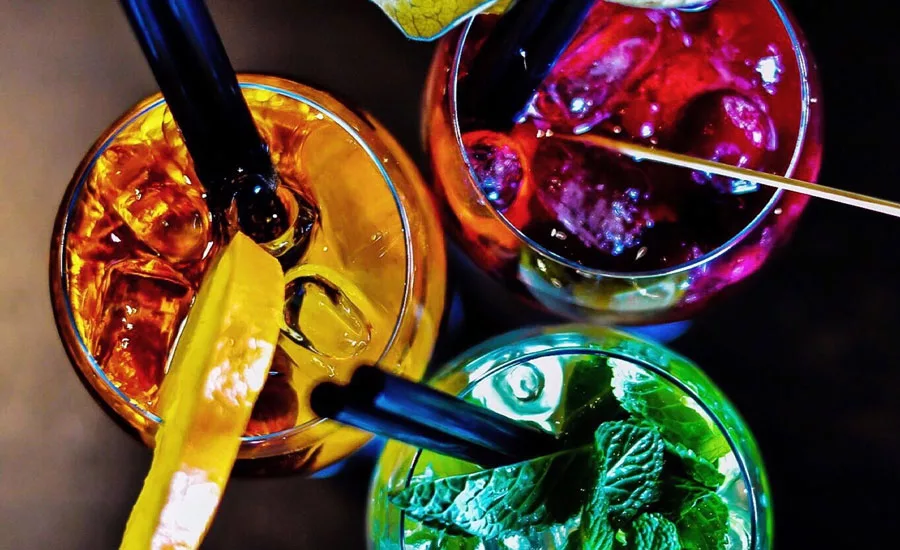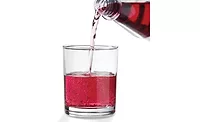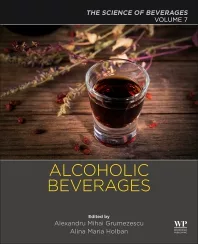Beverage R&D
Clean label influencing colors market for beverages
Suppliers balance clean label with functional ingredients

The ominous voice that whispers to Ray Kinsella in the 1989 sports fantasy film “Field of Dreams” tells the Iowa farmer “If you build it, he will come.” In new product development, the trend of manufacturing with clean-label ingredients seems to have taken on the mantra of “If you formulate with it, they will come.”
As beverage-makers look to develop products that adhere to natural, clean-label trends, the colors market is seeing firsthand the effect it is having.
“At this point, the naturalness and clean-label trend goes without saying, and we’re seeing a huge impact on the color market in the U.S. Over 80 percent of new product launches worldwide that include color ingredients include natural color,” says Meghan Fox, marketing specialist for St. Louis-based Sensient Food Colors, citing 2020 Mintel-sourced data. “In the last five years, the clean-label trend has led to almost a 50 percent increase in new products launched with natural colors in North America alone.
“Natural and organic colors offer a wide rainbow of choices for developers, but nature particularly shines with red and orange shades in the beverage space,” she continues. “Anthocyanins thrive in low-pH systems and can be among the most vibrant and cost-effective solutions, so red shades are very popular for many beverage formulations.”
Nathan Morrison, applications scientist for Milwaukee-based Chr. Hansen, also highlights the impact that clean label is having on the colors market.
“The trend toward more natural beverages is continuing to progress. In the past, just using any type of natural color would have been sufficient,” he explains. “Now customers are asking for no preservatives, and minimal if any additives in their beverages. This has created a growing trend toward clean label and the use of fruit and vegetable juice colors have met this need.
“Our FruitMax range of clean-label colors have been helping beverage companies transition to natural and provides them with a label that is appealing to consumers,” Morrison continues. “The organic beverage market continues to grow, and more of the fruit and vegetable juice colors are starting to become available in organic varieties.”
As demand for natural color choices continues to climb, Jeannette O’Brien, vice president at GNT USA, Tarrytown, N.Y., explains that this doesn’t mean vibrant colors are in the rearview mirror.
“Consumer demand for natural and organic ingredients is on the rise, but using clean-label colors doesn’t mean manufacturers are restricted to subtle hues,” she says. “EXBERRY colors are made from fruits, vegetables and plants, but they can be used to achieve almost any shade while maintaining a perfectly clean and clear label. They’re ideal for everything from enhancing fruit juices’ vibrant appearance to creating eye-catching cocktails with vivid shades such as blues and pinks.”
Ingredient suppliers note that the attributes that natural colors deliver make it an ideal choice for beverage formulations.
“Today, there is hardly any reason not to use natural colors,” says Diana Weber, marketing manager for Döehler GmbH, Darmstadt, Germany. “In times where consumers’ demand natural and healthy products, they offer the best consumer perception. Moreover, natural colors are very stable and the cost-in-use is in 95 percent of the cases not prohibitive, as the cost for color is in most cases marginal.”
Weber notes that natural colors sources also can have added benefits.
"Natural polyphenolic substances, which also include anthocyanins, are believed to have a positive effect on the human body by protecting it from free radicals," she says. "And beta-carotene, also known and often used in the industry as vitamin A, provides colors from yellow to red and offers a range of benefits including supporting cell growth and helping strengthen the immune system."
Although the macro trend of natural colorant usage is recognizable, suppliers note that its accession can be attributed to a gaggle of trends.
“There are several current beverage trends that impact the selection of natural colors,” says Stephen Lauro, president at colorMaker Inc., Anaheim, Calif. “First, in the category of alcoholic beverages, we continue to see ‘feel good’ alcoholic beverages with fanciful flavors (think ‘key lime’ and ‘ginger zinger’) that require the use of natural colors. Second, we also see a rising number of beverages infused with CBD and/or THC. Generally, these functional beverages have a ‘may-help-with-your-pain’ approach to the market. They must be colored in a way that is not appealing to children.
“Third, we continue to see protein beverages that require natural colors,” he continues. “Beverage companies are getting better and better at loading milk or soy or pea protein isolates into RTD beverages. All three trends are keeping us very busy; all three trends require some forethought when selecting natural colors.”
Putting the ‘fun’ in functional
Although clean label has found it place in beverage development, the demand for function-based beverages has found its footing. As noted by Lauro, the proliferation of functional beverages that feature ingredients that impact the performance of natural colors is placing greater challenges on suppliers and beverage-makers.
“The immunity advantage is a scenario we see rising out of the global lockdown across categories and regions,” Sensient’s Fox says. “Consumers will look for products with a health halo or functional benefits. In the color space, natural colors that are compatible with functional extracts can offer a major advantage to beverage developers looking to innovate quickly and capture consumer attention at its peak.
“Colors like blue and purple have better-for-you ‘superfruit’ associations, while oranges and yellows might bring to mind citrus flavors and vitamin C,” she continues. “Specifically, we see an increase in the use of perceived functional ingredients like antioxidant-rich elderberry juice or turmeric, as consumers take a renewed interest in their overall well-being. We expect corresponding reds and yellows to be on trend in this space.”
Christiane Lippert, head of marketing for food at Lycored Corp., Orange, N.J., highlights how functional attributes can offer an opportunity to spark ingenuity to amalgamate the clean-label and functional trends.
“Functional and new age beverages inject more creativity and innovative shade opportunities to the beverage industry, whether it is hybrids of fruits and other ingredients or plant bases,” she says. “In addition, functional ingredients have an impact on the shelf life of many natural colors, for example, very stable color pigments such as lycopene and beta carotene can be beneficial to the industry in terms of shade range and flexibility.”
GNT’s O’Brien highlights how color concepts can elevate a functional beverage’s attribute.
“Color concepts can be a great way to help enhance functional drinks’ beneficial credentials,” she says. “Green, for example, conjures up connections with fruit and vegetables and is strongly associated with well-being. Colors can also showcase exciting flavor twists — we recently used EXBERRY to color a pink watermelon kefir with vanilla and lime. Using plant-based colors can be especially useful when trying to appeal to health-conscious shoppers as they’re listed on the label as ‘fruit and/or vegetable juice (color)’ or ‘spirulina extract (color),’ which helps to underline the drinks’ positive impression.”
Instituting solutions
As beverage manufacturers seek color concepts that deliver a variety of product attributes, suppliers working to fulfill that demand.
“Sethness Roquette continues to develop new liquid and powder Class IV Non-GMO Project Verified offerings due to a spike in demand for non-GMO offerings,” says Brian Sethness, executive vice president of sales and marketing for Americas at Sethness Roquette, Skokie, Ill. “We now produce 13 Non-Gmo Project Verified Caramel Colors, which many of our customers have started purchasing. These are more expensive offerings than our typical caramel colors, but consumers (especially on the West Coast) like to see ‘the butterfly’ on product labels. Class I, or plain caramel colors, have become the fastest growing segment of caramel colors as they meet consumer demand for cleaner labels on the foods and beverages they consume. The drawback to Class I’s is that they can only reach a certain level of darkness — more of a light brown shade.
“The most recent Sethness Caramel Color is our SBL4, which meets a market niche in that it is a low 4MeI Non-GMO project verified color that was specifically developed for the beverage industry,” he continues. “Our other Non-GMO Project Verified caramel colors for beverages are higher in 4MeI.”
Chr. Hansen’s Morrison explains that suppliers are using their ingenuity to find innovative sources from which to create color concepts.
“New raw material sources of natural colors continue to be discovered and developed into marketable products,” he explains. “Additionally, more higher strength colors are being produced than there were in the past. Beverage manufacturers now have a multitude of choices between liquid and powder forms of many different colors to suit their manufacturing processes. Natural blue and non-caramel brown colors are beginning to gain traction in the market.”
Looking for a reprint of this article?
From high-res PDFs to custom plaques, order your copy today!







